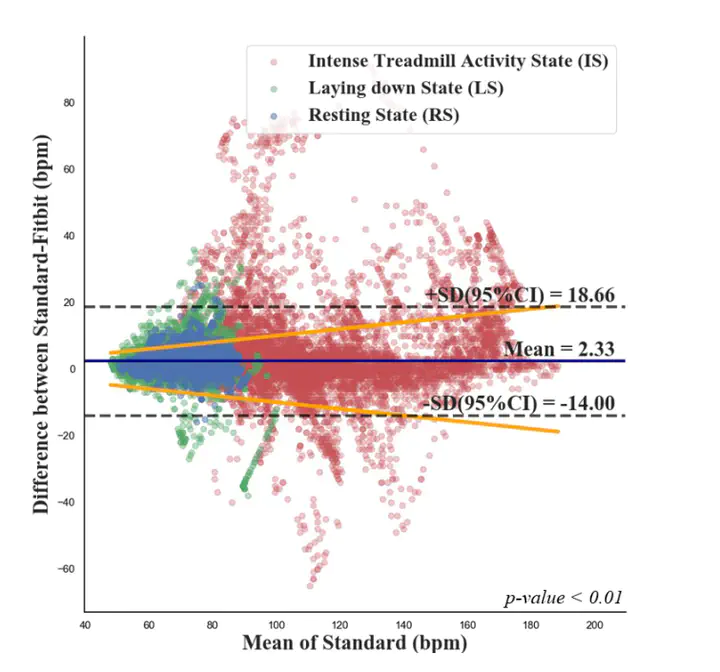Improving Heart Rate Estimation on Consumer Grade Wrist-Worn Device Using Post-Calibration Approach

Abstract
The technological advancement in wireless health monitoring through the direct contact of the skin allows the development of light-weight wrist-worn wearable devices to be equipped with different sensors such as photoplethysmography (PPG) sensors. However, the motion artifact (MA) is possible to occur during daily activities. In this study, we attempted to perform a post-calibration of the heart rate (HR) estimation during the three possible states of average daily activity (resting, laying down, and intense treadmill activity states) in 29 participants (130 minutes/person) on four popular wearable devices: Fitbit Charge HR, Apple Watch Series 4, TicWatch Pro, and Empatica E4. In comparison to the standard measurement (HRECG), HR provided by Fitbit Charge HR (HRFitbit) yielded the highest error of 3.26±0.34 bpm in resting, 2.33±0.23 bpm in laying down, 9.53±1.47 bpm in intense treadmill activity states, and 5.02±0.64 bpm in all states combined among the four chosen devices. Following our improving HR estimation model with rolling windows as feature (HRR), the mean absolute error (MAE) was significantly reduced by 33.44% in resting, 15.88% in laying down, 9.55% in intense treadmill activity states, and 18.73% in all states combined. This demonstrates the feasibility of our proposed methods in order to correct and provide HR monitoring post-calibrated with high accuracy, raising further awareness of individual fitness in the daily application.